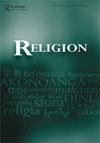世俗悖论:论非宗教者的宗教性
IF 0.9
2区 哲学
0 RELIGION
引用次数: 0
摘要
峡谷和修道院。读者可通过章节末尾的二维码试听作者的旅行,包括希腊东正教僧侣的诵经声。在二维码的旁边有一份书面摘要,介绍了读者在音频文件中可以期待和应该收听的内容。因此,摘要具有双重作用。它既是一种聆听提示,也为可能失聪的读者提供了一定的无障碍环境。一方面,这里有很多值得欣赏的地方。该书在方法论上非常成熟,但又不乏专业术语。事实上,作为一本商业书籍,它的写作风格和格式(尾注极少)都很平易近人。此外,该书补充甚至挑战了早期基督教研究长期以来对视觉和触觉数据(即文本和物质文化)的关注;该书的这一学术贡献可以调整并转移到更广泛的宗教研究学科中的其他专业领域。而且,作者的作品应该对大多数人、大多数地方都有意义,而不仅仅是她似乎针对的美国城市居民读者,尽管与基督教以外的其他宗教的僧侣运动进行比较的工作是由读者自己完成的,只是在佛教的方向上点了一两下头。同时,也可以提出批评。深度倾听并不一定是早期基督教修道运动中可用于保护环境的最重要的方面:我想到了古代禁欲主义的极简主义与现代物质主义和消费主义的对比。但是,这将是对本书缺少次要目标的指责。作者首先要写的是沙漠的寂静和声音;她的目的并不是要写一本保护地球的基督教宣言。因此,更有意义的问题可能包括:比较的界限可以在多大程度上跨越时间和空间,以及宗教体验(这里指的是听觉体验)是否可以从文学作品中提取和研究的问题。海因斯-艾岑并不是没有意识到这些问题,像她这样大胆的项目所伴随的风险也是如此。本文章由计算机程序翻译,如有差异,请以英文原文为准。
The Secular Paradox: On the Religiosity of the Not Religious
canyon and monastery in 2014. The QR code at the end of the chapter allows the reader to sample the author’s trip, including sounds of chanting by Greek Orthodox monks. Next to the QR code is a written summary of what the reader can expect and should listen for in the audio file. Thus, the summary does double duty. It functions as a listening prompt – and provides some accessibility for readers who may be deaf. On the one hand, there is much to appreciate here. The book is methodologically sophisticated without being jargon-heavy. Indeed, it is written in an approachable style and format (endnotes are minimal), as a trade book. Furthermore, it complements and even challenges early Christian studies’ longstanding pre-occupation with visual and tactile data, namely texts and material culture; this academic contribution of the book could be adapted and transferred to other specializations within the broader discipline of religious studies. And the author’s work should have relevance for most anyone, most anywhere, not only the American city-dwelling audience that she seems to address, although the job of comparison with monastic movements from other religions besides Christianity is left up to the reader, except for a nod or two in the direction of Buddhism. At the same time, critiques could be made. Deep listening is not necessarily the most important aspect of early Christian monasticism available for use in defense of the environment: ancient ascetic minimalism versus modern materialism and consumerism comes to mind. But that would be to fault the book for missing a secondary target. The author has set out to write on desert silence and sound, first and foremost; her aim was not to pen a Christian manifesto for protecting the planet, per se. So, more germane issues might include how far the limits of comparison can be stretched across time and space, and the question of whether religious experience, in this case aural, can be extracted and studied from literature. Haines-Eitzen is hardly unaware of these issues, and such are the risks that accompany any project as bold as hers.
求助全文
通过发布文献求助,成功后即可免费获取论文全文。
去求助
来源期刊

RELIGION
RELIGION-
CiteScore
2.70
自引率
0.00%
发文量
58
期刊介绍:
RELIGION is an internationally recognized peer-reviewed journal, publishing original scholarly research in the comparative and interdisciplinary study of religion. It is published four times annually: two regular issues; and two special issues (or forums) on focused topics, generally under the direction of guest editors. RELIGION is committed to the publication of significant, novel research, review symposia and responses, and survey articles of specific fields and national contributions to scholarship. In addition, the journal includes book reviews and discussions of important venues for the publication of scholarly work in the study of religion.
 求助内容:
求助内容: 应助结果提醒方式:
应助结果提醒方式:


